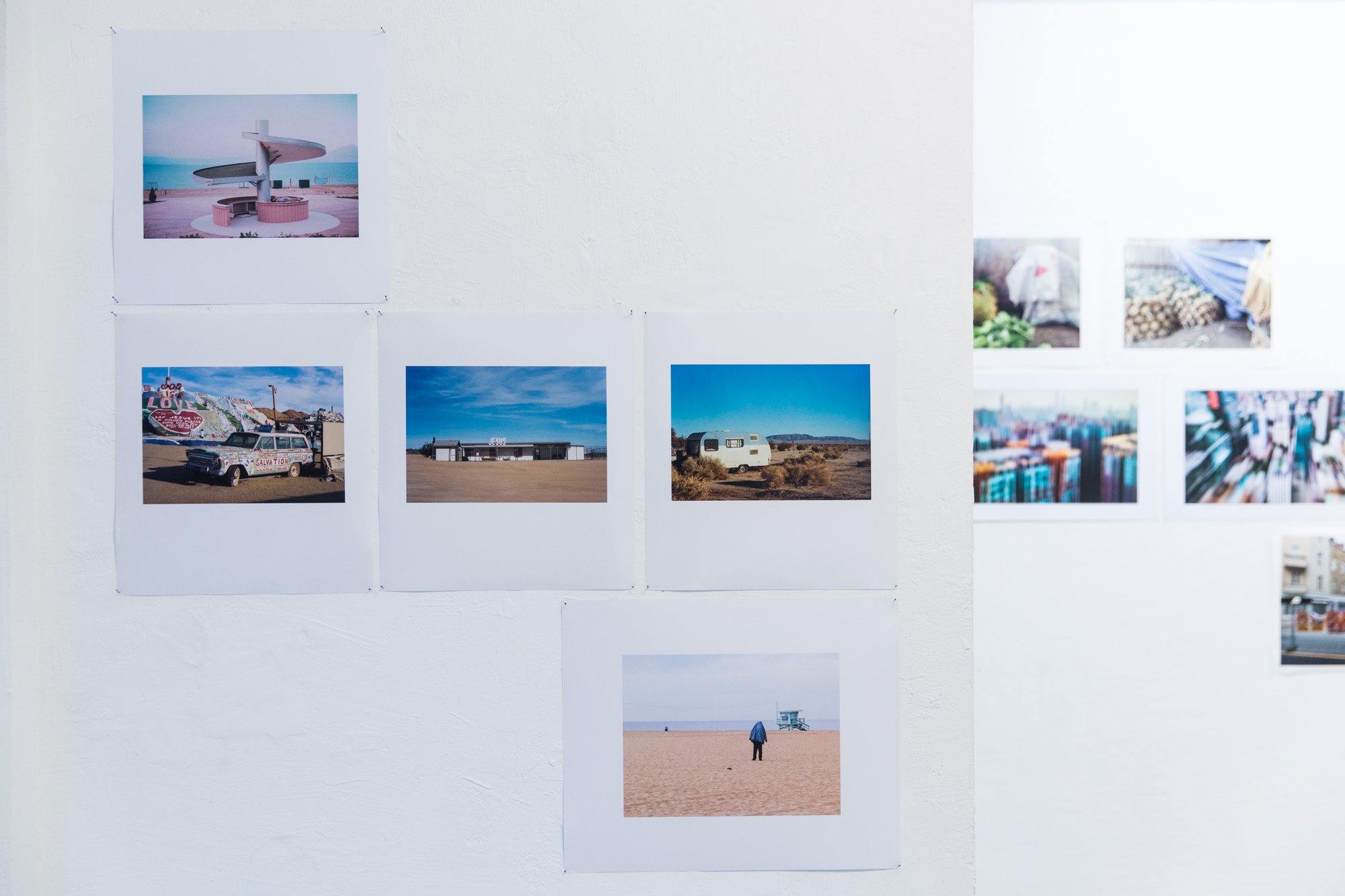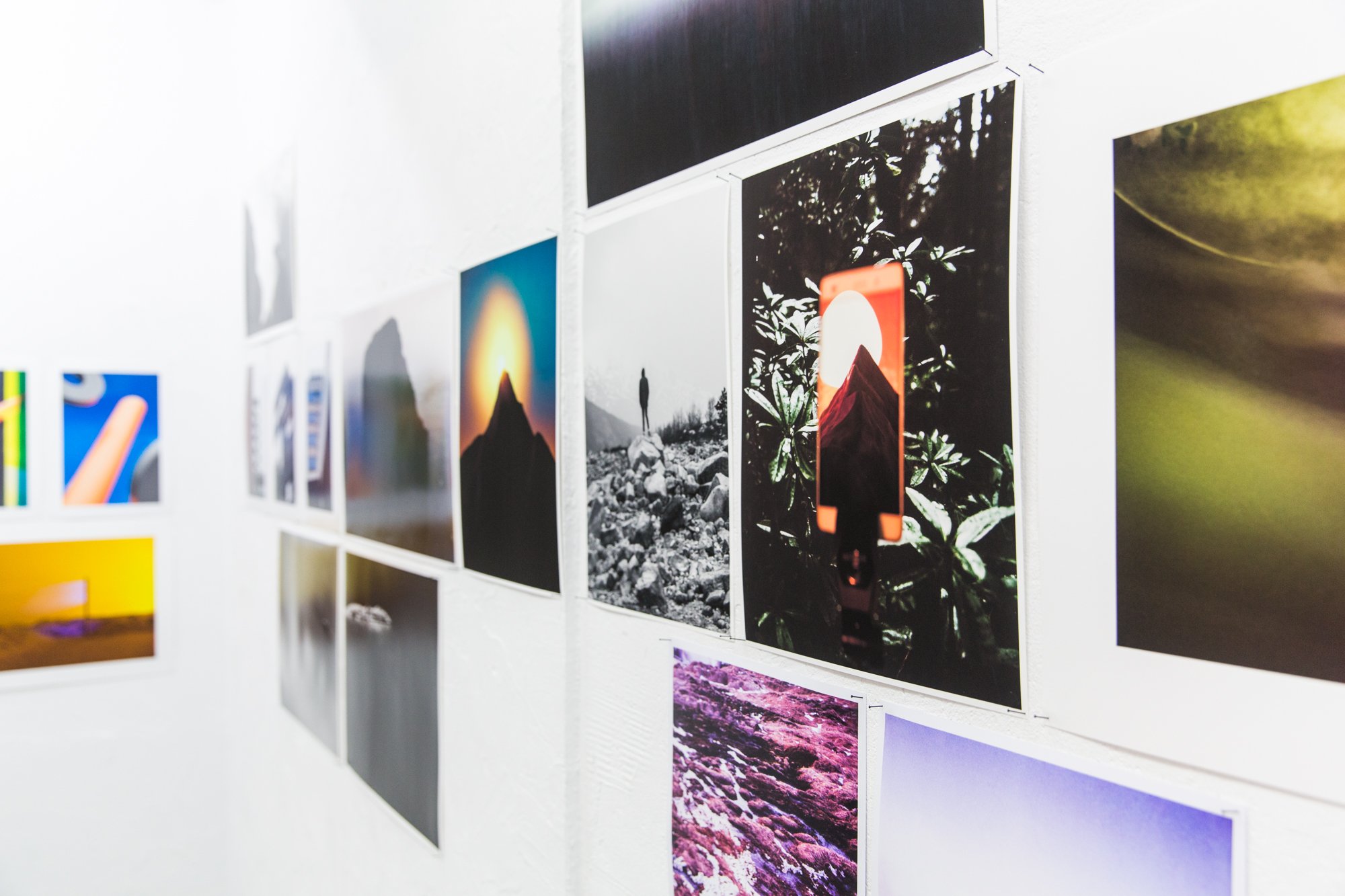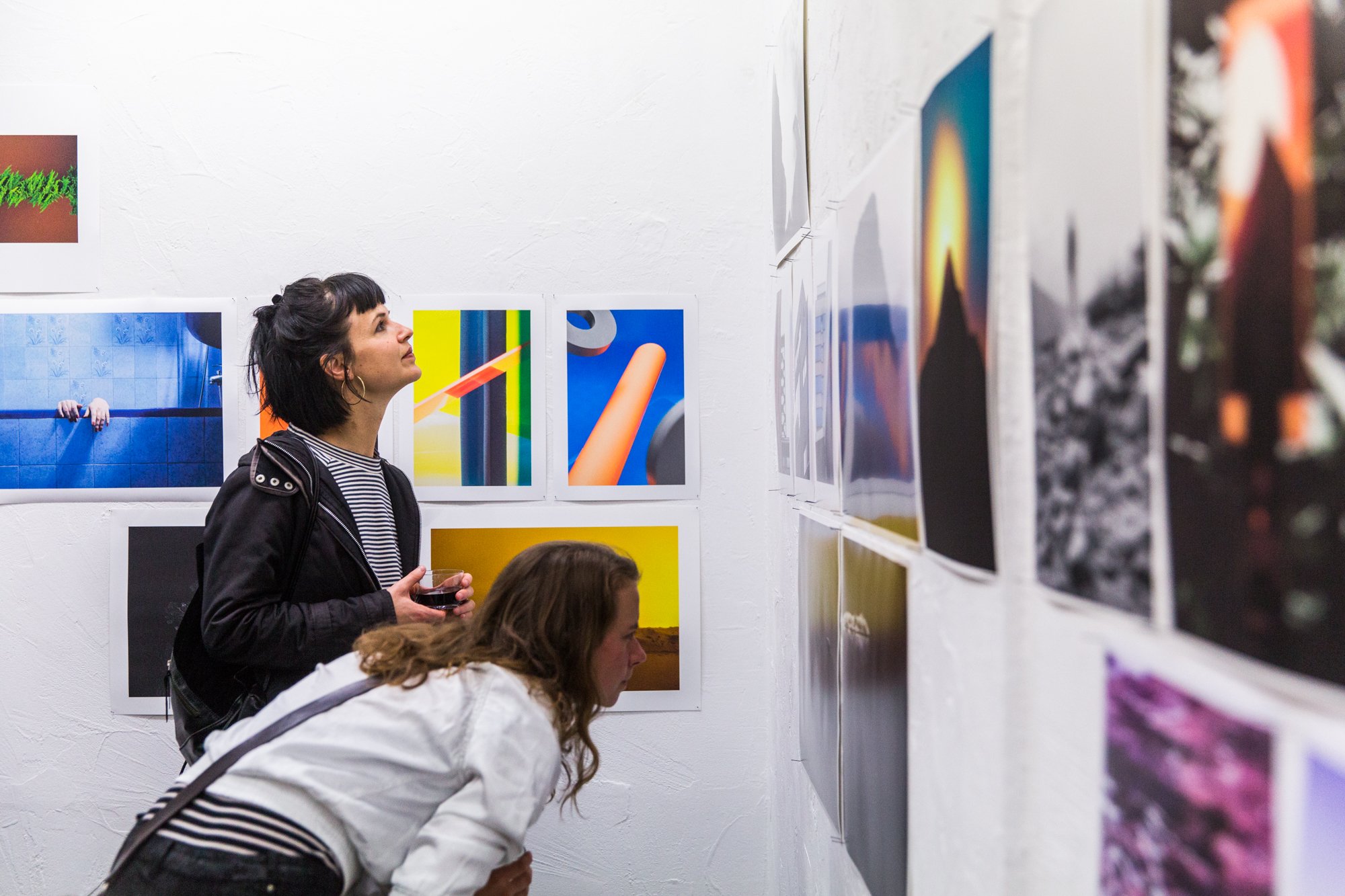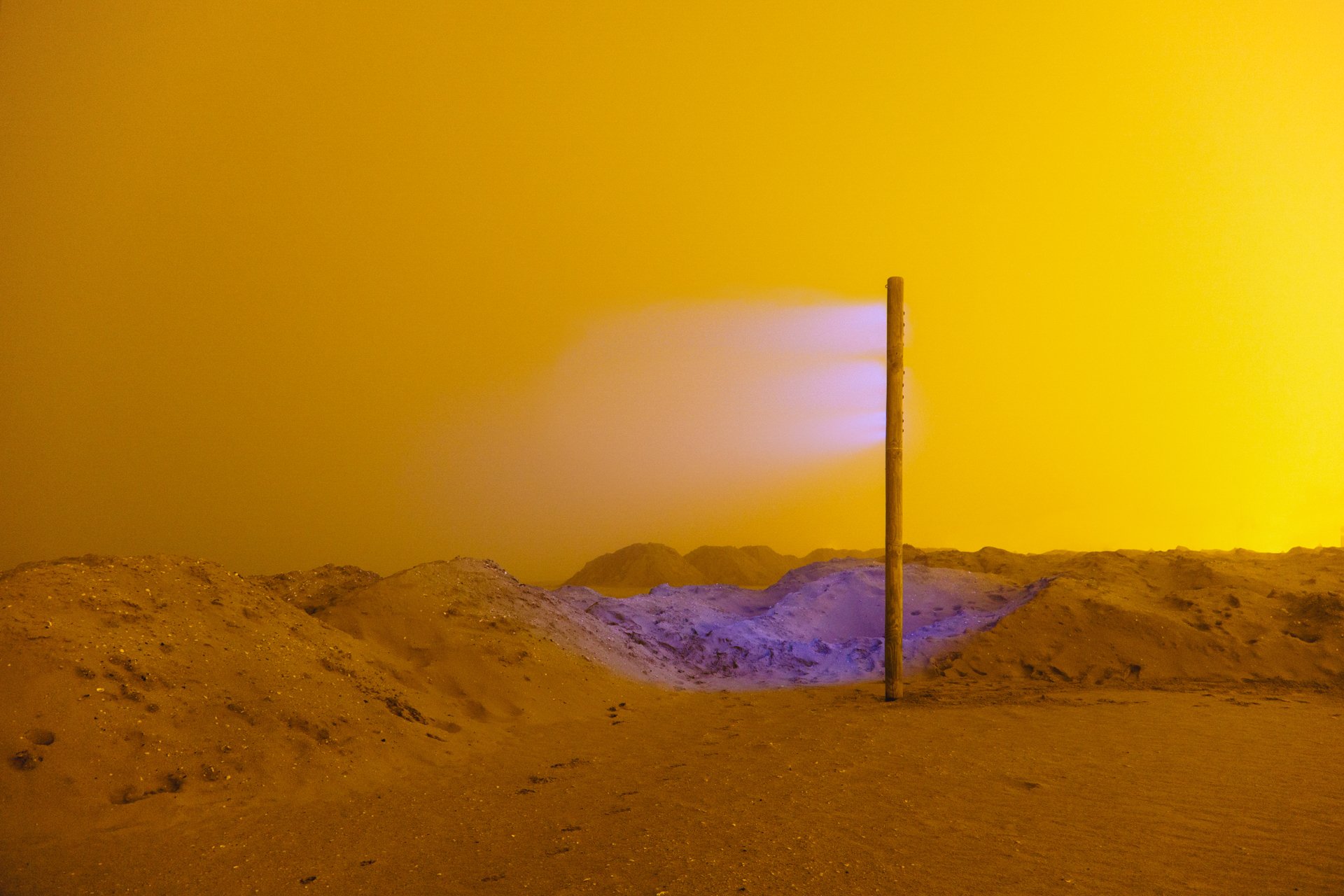BBA Photography Prize 2018
About the
2018 edition
BBA Gallery presents a selection of 36 photographers in a group show following an Open Call for Emerging Photographers during the European Month of Photography (EMOP). The exhibition features artists from 12 countries, including melancholic B&W images and quirky portraits as well as architecture & atmospheric landscape photography.
36 Photographers
-
This series is part of an on-going project that reflects the artist’s relationship to the landscape and culture of northern Alberta, Canada.
I grew up in the industrial hinterland of northern Alberta, and something about this landscape keeps pulling me back.
A kind of half love, half haunting: starkness on a backdrop of serenity.
The sense of home for me exists in the tension that blurs the natural and altered landscapes of the north, in a culture and economy shaped by primary resource development.
Sometime subtle, sometimes not.
It’s an evening walk truncated by a pipeline crossing. An ice road over a river. A forest of poplar planted for logging. Small towns webbed together by hundreds of miles of roads. The resources we rely on to be here, the reason we are here to begin with.
-
The camera allows me to expose internal discourses and to translate psychological processes into the visible realm, confronting the intangible and connecting the mental and physical world. I use objects and skin as sensory elements pointing to the impelling force embedded in flesh and bones, manifesting a dense emotional atmosphere through an affective symbolism. Making a photograph is a circular action, implying birth, death, dissociation, and abjection. The relationship between artist and artwork compares to mother and child; the 'inner space' is extended through the camera and into the image: Thought and vision are injected into the womb of the camera, where a palpable reality is impregnated by light, coalescing into a two-dimensional image. A part of the self is killed, the reality in front of the lens sliced and silenced by the shutter, only to be later revived by the gaze of the beholder. Through this extraction, it is not only possible to gain a new perspective on the alienated familiar, but also to share insight and experience.
Statement for “Omens”
An Omen is an object or sight indicating eventual notions of the future. It is subject to interpretation and deeply dependent on personal belief and experience. Formed by what has been done and happened to us, our minds act as a filter, registering what is connected to our threads of thought with a special emphasis. Through my own filter I have encountered the same reoccurring symbols over different periods of time, subjectively often pointing to disruptive events in fore- or hindsight. With a strong autobiographical influence the stream of images explores the relationship between subjective and objective reality, as well as the interaction between the own bodily entity and the surrounding environment. The visuals are interwoven, evoking a story which transforms into smoke when attempting to retell it.
The book for “Omens” was first published in 2018 in a first edition of 14 and shown at Offprint at Tate Modern, London. It is currently sold out with a second edition in the making. Omens' was also included in the exhibition “Family of No Man” at Cosmos Books at Les Recontres d'Arles in 2018.
-
Jessica Bizzoni is a spatial designer, researcher, and photographer. In connection with art and design as means of expressions and criticism, she investigates environmental issues with site specific projects. Her poetic works come from a systematic process of design all with a spirit for intuitive experimentation. Each result is focused on spatiality of materials and patterns and the mix of various media is the aesthetic research that moves environmental installations towards a perceptual experience.
Bizzoni graduated at the Design Academy of Eindhoven in 2016, where she researched the connection between sound and space by designing sound immersive installations. Former designer at Studio Zimoun, she worked on innovative kinetic concepts and immersive projects for retail and the public sphere in Berlin.
-
Using herself as the subject, Louise creates series of thought provoking aesthetic self portrait narratives which tell stories of a person, a place or an emotion.
Inspired by traditional painting methods and early photographic printing processes, she plays with long exposures and techniques influenced by early photographic printing processes.
The combined methods give her photographs an ephemeral, timeless, and painterly quality.
-
Climat of absurdity, 2018
Artificial rejuvenation, artificial oases, artificial worlds. In a society that wants to be faster, more polished and better, plastic is the epitome of artificial optimization.
A society that is self-contradictory creates an attempt to circumvent the imperfections of nature. Things that reflect this discrepancy all the more. This depravity of society is the focus of this photographic work to raise the question of how far this corresponds to the wishful thinking of a perfect world and to re-examine apparent security. It uses the superweigh plastic, of which modern man could not be more dependent, as a means of transport to represent this kind of ideology and to depict a glossy polished society
-
A native of the Pacific Northwest, Rodrigo began his excursions into the forests, mountains and coast as an exercise in philosophical contemplation. Spending time alone in the wilds turned from a therapeutic endeavor into a passion for capturing the unique moments he saw. An avid reader and student of philosophy, Rodrigo derives much of his inspiration from the works of the ancient Stoics and Epicureans. He is obsessed with the flow of time and themes of change, impermanence, life death & rebirth, and tranquility.
-
Anthony Prévost is a photography-based artist living and working in London. He graduated from the MA in Photographic Studies of the university of Westminster in 2016 and previously studied documental photography at Blankpaper school in Spain.
His work has been exhibited in various group exhibitions around Europe and featured in magazines. He was selected as the runner-up for the BJP International Photography Award 2017.
As an artist his interest lies in the notions of representation, perception and reference. How do we (mis-)understand the world through its various representations?
-
With this project, I cover several themes: I am particularly interested in identity models and their perceptions. Starting from the premise that cultural identities can not be fixed in definitive categories, I deconstruct and reconstruct these identities by mixing the cultural attributes and signs of each other. I also extrapolate this concept of cultural appropriation to embrace the idea of appropriating the exhibitions locations: e.g. museums, galleries, artists’ center, etc. In short, I am appropriating the cultural locations related to contemporary art (generally exclusive and closed) by placing virtually some of my photographs into those spaces.
-
When I take a self portrait, I examine myself the same way I do when I take other people’s photographs. I am interested in what a subject can communicate in a non-evident manner; via implicit qualities, habitus, and possessions.
The work deals with presence and absence. Within a frame, I intend to give space and assemble an individual world for the subject to live in. It is meant to be a codification of belonging. With everything being merely transitory, I ask myself where something or someone stood before it ended, and explore the current state.
-
Marcela Ferri is a Brazilian born photographer and director based in London since 2011.
Ferri likes to call his photographic practice “An essay about freedom” as, in a nutshell, freedom is what dictates his projects. It can be the freedom of leaving society and moving to the middle of nowhere and create your own world, or the freedom to fight and be your true self independently on how society treats you. It’s the freedom of choice, the freedom of being. Through life he spent most of his time trying to find or create magic within the mundane adding special elements to existing places creating a completely new narrative.
He doesn’t want to show the negative side or the struggle of a group of people. He wants to bring them up and show the good, the qualities and the beauty of who they are and the amazing things they create. He aims to bring people hope.
-
This selection of images is an extract from an ongoing project, focused on the ever changing appearance of Berlin and its interaction with the inhabitants. Looking straight at its architecture, the images show a place that might not be the same anymore.
The aim of the series lies in its testifying nature, not only documenting, but also discovering a piece of the city. Indeed, the project is moved by a constant need of possession, expressed through the acquisition of images from a subjective point of view. Even if only empty spaces are presented, there is still the chance to feel human presence.
Moreover, the buildings’ architecture itself stands for its use and relation to the people, constantly shaping the city’s profile.
For its own nature, this series is theoretically endless.
-
Description text goes here
-
Description text goes here
-
This series of still lifes, shot on the Indonesian island of Lombok, tries to explore the idea of innate beauty, foreignness and aesthetic intentionality. As seen by Western eyes, tropical South-East Asia is full of exotic human and natural environments. The three images in this series—bags of cast-away lettuce heads, piled-up pineapples stored under a torn tarpaulin, and carefully packed fishing nets—search for visual interest in the arrangements of refuse and utilitarian objects created in the daily lives of the people living on Lombok. Any aesthetic value someone may find in these three still lifes could be considered either from the perspective of the nature of the photographic composition or, alternatively, in the otherness of the objects and scenes featured in the images.
Following this idea, the viewer could try to consider the coveted commodities created in the industrialised capitalist system from a position of otherness and decide if their value is truly innate or, if not, also a matter of perspective.
-
Giulietta Coates’ depicts the unsettling nature of loss and beauty, dread and longing in her landscape photographs. Perceptive to the non-apparent, being and non-being, she speaks of this longing as feeling like nostalgia, but not for something once had and has since been lost, but more a nostalgia for what never was. For Giulietta, this void sets up a kind of death space, where connection and intimacy are longed for but remain forever elusive. Her method then, is to have ‘conversations’ with individual motifs – a rock, a pool of water, a wooden stump – allegories for wider narratives that speak of our mysterious relationship to the ‘otherness’ of beauty, and of the natural world in the face of our own mortality. Seeing her language as essentially aligned with Romanticism, Giulietta now feels that photography is the medium of death and longing. Giulietta lives and works in South of France and has a Master degree in Fine Art from the Royal College of Art, London.
-
Hikaru Hayashi is a Japanese photographer who captures the day to day episodes that appear before him. After finishing his studies photography in Vancouver, BC, he began working for clients while actively pursuing projects in the documentary field. In 2012, he was a photographer for an NGO run by UNESCO in Nepal, working to address issues concerning education and the need for more schools. Between 2013 and 2014, he participated in a group exhibition in Kiev, Ukraine about the aftermath of 3.11 and reported on issues not covered by mainstream media.
These works are the result of playing with medium into non-symbolic thought. In the process, Hayashi wanders aimlessly in the forest, then uses his body as a medium as well.
He abandons intention, and just follows nature.
-
Please look at my picture without any statement in your head and fantasize…
-
Mira Varg is researching the extensive power of human mind; what allows us to see the recesses of the different ‘dimensions’ that surround us. Her practice revolves around art that creates occurrences that challenge our perception and understanding of our normal reality.
The more time we spend away from the physical reality, the more it frees us to interlink the fixed elements of existence: the matter, the forms - and even to a certain extent, the “truth”. We must realise and explore the power of our own minds to access different ‘dimensions’ that exist around us. Experimenting with our mental and emotional understandings can open new horizons for us to explore, and help us to understand the world around us for deeper experiences.
-
Description text goes here
-
In this project I wanted to explore the special relationship that some people establishes with what I would call “unusual pets”. I had the feeling that I could discover interesting situations and document how somebody can be really involved in a different kind of friendship.
It began in 2015 as a personal project in my free time, in Northern Italy. I came in contact with animal sanctuaries, vegan activists or just with people who are fond of animals.
There is always a special connection and, as every relationship, a story to tell.
-
Through photography, indoor installations, and street and public art, Gustavo contests the similarities between the natural world and the urban environment.
His series aims to show ordinary human constructions as monuments pointing to the sky.
-
Arwe is the artist name of Richard Westerhuis (born in 1965). Arwe produces conceptual portraits in limited editions. In his work Arwe examines the ambiguity of human identity.
The name Arwe sounds like a question. A question about who we are. How are you? 'I'm doing fine'. We all know this is not a real answer. It is a conditioned response that is socially acceptable. We put on a mask and give socially desirable answers and show socially acceptable behavior. We play different roles and show the behavior be fitting those roles. But where is our true self? Does it even exist? 'Know yourself', Socrates said. It is the most important task in life. Arwe experienced the nullity and temporality of human existence during his ocean voyages. Halcyon experiences and memories that are forever stored in his system.
We are constantly on the move, but why? The vastness of the oceans gave him all the answers.
The permanent change of nature made Arwe realize that even when in a static situation, there is plenty to observe and experience. A pure state of being in which media, advertising and all other nonsense were lacking. Only at sea the resonance of the earth is still tangible. It is the oscillation that every living creature needs to be able to orient itself in order to find its 'track' in the world. On terra firma, Arwe utilized art to give expression this resonance. Even when he was not aware of it, art intuitively guided his path and success. Arwe's passion for the arts came to surface when he became an art collector at the early age of 21. His plans to complete a fine arts education were interrupted when faith decided he had to take another direction. In 22 years, he created a highly successful business conglomerate in the Netherlands. A burnout made Arwe reconnect with his artistic roots and triggered his urge to explore human nature, using photography as his medium and human behavior as his voice. In 2016, Arwe decided to solely concentrate on creating art. He started exploring narratives based on his life experiences. His burnout experience became the subject of the series titled ‘Through the Second Skin’ (2017) which was well received by the public. Arwe has rapidly achieved the goals he set when he started as a conceptual artist. The decision to become a major influence in the fine arts scene has been reinforced by several awards and a number of solo and group exhibitions. He is committed to spread his message around the world, be it in galleries, art fairs and through social media.
-
I approach photography as a form of meditation, a practice in which the process is equally important as the outcome. My background in
Sociology, Psychology, and
Philosophy plays an important role in my artistic endeavor, as I am trying to convey a fusion between the different schools of thought that have inspired me.The Japan Studies that I followed for a year in Nishinomiya (2008) coincided with my immersion in Photography. Living in another cultural setting and faced with the language barrier I methodically started structuring my experiences through the camera.
Challenging both the photographer’s and the viewer’s ways of seeing is at the core of my work.
-
‘The Memory of Time’ is a study about the plasticity of time and light, to see time and light as something elastic, that can be moulded into something palpable. There is a strong correlation between the impermanence of light and the fluidity of time. In ‘The Memory of Time’, Verlaan explores abstract spaces. Places that cannot be deciphered immediately, they evoke a kind of altered state of perception. What interests him most, are architectural structures where light can fleet in and out, creating a new space. To him, light is both tangible and evanescent medium, if not a language. By fading, moulding and carving the light in his photographs, he tries to transform reality and move into an imaginative and intuitive realm.
His process involves composing layered images that nearly look like drawings, scraping off the innate realism that is part of photography, thus creating a more sensorial and subliminal world.
-
Little was spoken my family, stories were rarely told, and neglected was the relationship to one's past, to history. I have always felt this atrophy of memory as a lack, a crack that separates me from reality and presence. But I am infected by oblivion and blindness, too, and when my eldest friend tells me about all the experiences we shared, I am surprised: not even those blurry and dreamlike pictures, typical for memories, want to appear - although I definitely was actively involved, it is rather as if I had not lived this moment at all.
When I take pictures - and even though I usually make quite abstract pictures which show the situation how not the human eye, but the camera "sees" it-I can remember. I still forget, especially the mood and who I meant to be in this very moment, but the pictures i carefully date and archive, leave a mark in the infinite continuity of time. They record that there was something and that I was there in this past. And yet the abstraction corresponds to the quality of my memory, way better than a documentary image, because it takes account of the inevitable incompleteness of the visualization and the fact, that the moment, which remained largely opaque even in its present, has returned even deeper into incomprehensibility.

































